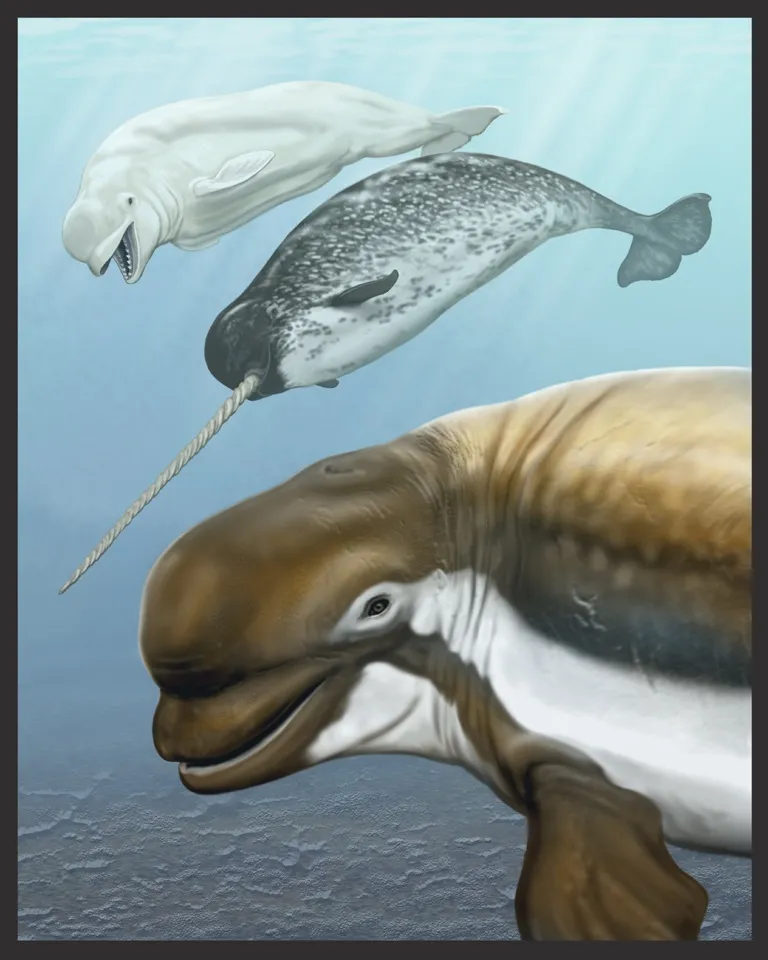Illustration of a New Fossil Whale, Bohaskaia monodontoides

A reconstruction of a new fossil beluga relative, Bohaskaia monodontoides, described by Smithsonian scientists, is in the foreground. Its living relatives, the beluga and narwhal, are illustrated left to right in the background. The coloration of the extinct whale is speculative.
Monodontids, the group of whales that includes living belugas and narwhals, are emblematic symbols of the Arctic. However, the fossil record shows that these animals had a much larger range than the northern pole.
In the March 2012 issue of the Journal of Vertebrate Paleontology, the National Museum of Natural History's curator of fossil marine mammals Nick Pyenson, and Howard University/NMNH pre-doctoral student Jorge Velez-Juarbe described a new species of fossil monodontid from early Pliocene deposits (around 3-4 million years old) in Virginia and North Carolina. The fossil, dubbed Bohaskaia monodontoides, honors David J. Bohaska of the National Museum of Natural History (NMNH) and member of the Pyenson Lab, for his knowledge and dedication to the paleontological heritage of the eastern seaboard of the United States.
Learn more about the recent discovery in the Ocean Portal Paleobiology Blog.

